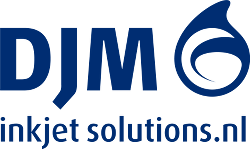Inkjet integration is skyrocketing

Variable data has made its appearance in many applications across the industry. Whether it concerns the printing of unique codes on packaging, or data to print short runs, inkjet printing has emerged to print these applications efficiently.
With the many inkjet developments, such as higher resolutions, new printhead technology, other ink sets, etc., inkjet printing has proven itself as a highly usable printing technology.
Some examples of where inkjet can be used are:
- product identification; by adding unique codes, products can be identified and/or authenticated later.
Examples: labels (tax), tickets secured codes, mailer bags etc.
- supply chain optimization: printing products at a very late stage in the supply chain maximizes flexibility and enables rapid changes while reducing inventory.
Examples: labels, trays, etc
- process optimization: print products inline with existing processes and create optimized production. Merge small jobs into one optimized run, or automatically produce unique items in an automated process.
Examples: envelopes, shipping boxes etc.
Integration is different from retrofitting
The biggest challenge with integration projects is to keep the line’s overall productivity.
Adding functionality increases the overall complexity and requires the operator to pay attention to several things. It is important to always assess the integration from the operator's point of view and, based on this, to make the integration decisions.
Specific machine interfaces and protocols need to be developed to maximize flexibility, enable short changeover times and efficiently execute small jobs.
This means that not only the printer, but the entire printing process must be integrated. If you don't do this, you create a production line that is hardly profitable.
Full integration
The first choice to make is to choose the inkjet printing technology that requires minimal maintenance, requires little operator attention and does not slow down the overall process. Maximizing uptime results in maximizing the output.
After the selection of the right technology, data processing comes into play. Data processing can be organized through protocols, where print files are automatically selected, ripped and sent to the printer. This process should also ensure data integrity so that the right image is printed at the right time.
Special machine interfaces allow for automated tuning of integrated processes such as start/stop, pause etc
Full integration projects are time consuming, challenging and require perseverance. But they are also the most rewarding because you benefit from optimized production day in day out.
We are specialized in inkjet integration projects, and are happy to assist you in solving your integration challenge.

Arwin van Oostveen
International Sales Director
Mobile: +31 (0)6 21 33 14 93
Office: +31 (0)341 43 70 03
Email: arwin@djm.nl
LinkedIn: DJM
LinkedIn: Arwin van Oostveen





